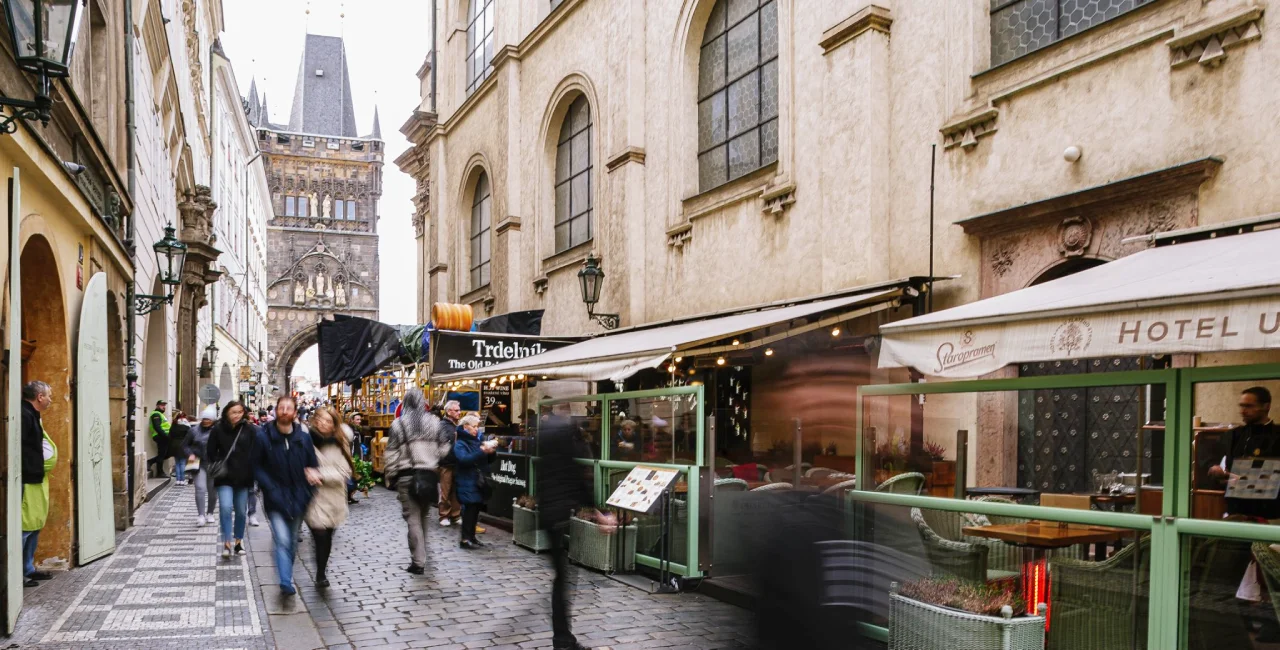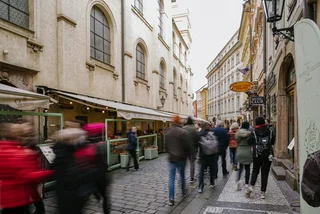After years of legal battles, the city of Prague has finally succeeded in efforts efforts to restore the historical and architectural integrity of one of its most-walked pedestrian streets. The intrusive patio area on Karlova street, a major thoroughfare leading to Charles Bridge, has finally been removed, Praha sobě has confirmed on social media.
The elevated patio area, which had dominated a significant portion of the narrow street, had long been a subject of controversy and opposition due to its obstructive presence. Up to 100,000 people walk down Karlova street every day.
The removal of this patio area, which housed restaurant seating and stands for food and drink (including the controversial trdelník) is a victory for those who have championed the cause of reclaiming public space for pedestrians and enhancing the aesthetic appeal of the historical district.
"The royal road is a bit more refined!" Praha sobě wrote on social media last week. "Giant front gardens right by Charles Bridge have been replaced by normal tables and chairs. Thanks to this, the beauty of the historic center will finally stand out, and in addition, even an ambulance can now pass through here."
"The Prague monument reserve, where tourists from all over the world come, looks a bit more authentic, and we can be proud of that. We, at least, are very happy about it."
The removal of this patio area may not seem like a large undertaking, but it took the city of Prague four years of ongoing legal battles to finally achieve.
New guidelines for the use of public space in the city center, which specifically targeted the Karlova patio area, went into more than a year ago. Ultimately, the city had to go to court in order in finally remove it a year later.
As a compromise, the city agreed to allow a smaller row of tables serving guests of restaurants in the area. The table seating takes up less than half the space of the former patio, and will be brought indoors overnight.
"I started working on [this case] four years ago. I never imagined how long it would take," Prague city councilor Kristýna Drápalová wrote on Facebook.
"And what did it take? An attempt to topple the Prague coalition so that the regulation of front garden areas does not pass. Conviction of the owner for corruption. Conviction of a police officer for abusing the powers of a public official. A protracted court battle to terminate the lease. And a lot of other things that I'd like to forget."
"[The patio] occupied more than a third of the narrow street, where sometimes up to a 100,000 people walk to and from Charles Bridge every day. It scraped against the walls of one of the city's most important baroque churches; it is said that coffins for funeral mass had to be carried over it, because it stood right in front of the side entrance. And it was hideous."
Prague's success in removing the intrusive patio area serves as an example of the city's commitment to prioritizing its cultural and architectural heritage. The restoration of the area will contribute to a more authentic and pleasant environment for residents and visitors alike.












 Reading time: 2 minutes
Reading time: 2 minutes 
























